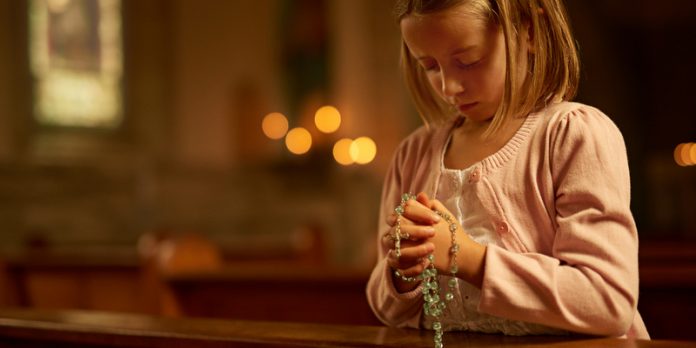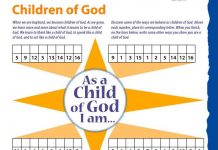
MICHELE SMITH
I’m continually looking for new ideas and inspiration for activities with my seventh-graders. With October being the month of the Rosary, the religious education classes always dedicate some class time to praying the Rosary, so my class was pretty familiar with the prayers and the order in which they are prayed. For this year, I thought we would focus on the Mysteries of the Rosary and learn how to meditate on those particular times in Jesus’ and Mary’s lives. Using visual symbols became a great tool for me to teach my class something more—on their age level.
Memorizing the Mysteries
Realizing that many students memorize prayers but don’t think about the meaning of the words, I wanted to try a visualization activity. I wanted students to understand the meaning of the Mysteries—not just say the words. So I decided to have students think of symbols that would represent each Mystery. That way, when they think of the Joyful Mysteries, for example, they would remember symbols for each Mystery. Hopefully, by visualizing the symbols, they could better focus on the meaning of each Mystery and not just what the Mystery is called.
To accomplish this, I broke the class into four groups of five students. One group worked with the Joyful Mysteries, one with the Sorrowful Mysteries, one with the Luminous Mysteries, and one with the Glorious Mysteries. Each student was responsible for researching one of the five Mysteries that his or her group was assigned.
I gave each student a handout that named the Mystery he or she would research, Scripture citations associated with the Mystery, and a few questions to answer about the Mystery. The questions prompted the student to read Scripture and seriously think about the Mystery. By completing the worksheet, the student was able to think of a symbol that represented his or her Mystery.
Students made their symbols out of construction paper and displayed them on poster boards. Individual student “experts” then used posters and handouts to teach the rest of the class about the Mystery, the Bible verse(s), and the meaning of the symbol. Then the posters were displayed in our classroom.
The students seemed to enjoy this activity. It helped them locate stories in the Bible. By choosing their own symbols, students better understood the Mysteries. Because students were actively involved in the lesson, they now have a unique understanding of the Mysteries of the Rosary.
These were the symbols my seventh-graders came up with:
The Joyful Mysteries
The Annunciation: an angel
The Visitation: a handshake
The Birth of our Lord: a manger
The Presentation of Jesus: two doves
The Finding of Jesus in the Temple: a temple
The Sorrowful Mysteries
The Agony in the Garden: praying hands
The Scourging at the Pillar: a whip
The Crowning with Thorns: a crown of thorns
The Carrying of the Cross: a cross
The Crucifixion and Death of our Lord: a crucifix
The Luminous Mysteries
The Baptism of Jesus in the Jordan: a shell with water drops
The Wedding Feast at Cana: wedding rings
The Proclamation of the Kingdom of God: a banner saying “welcome”
The Transfiguration: a cloud with “this is my Son” written on it
The Institution of the Eucharist: a host and chalice
The Glorious Mysteries
The Resurrection: a butterfly
The Ascension: a cross in the clouds
The Descent of the Holy Spirit: a dove
The Assumption of Mary into heaven: a crown in a cloud
The Crowning of Mary, Queen of Heaven and Earth: a crown
Michele Smith is a seventh-grade catechist at St. Callistus Catholic Church in Kane, Pennsylvania.
This article was written by the Catechist Staff and appeared in Catechist magazine, March 2012.
Image Credit: Cecilie_Arcurs, istock




